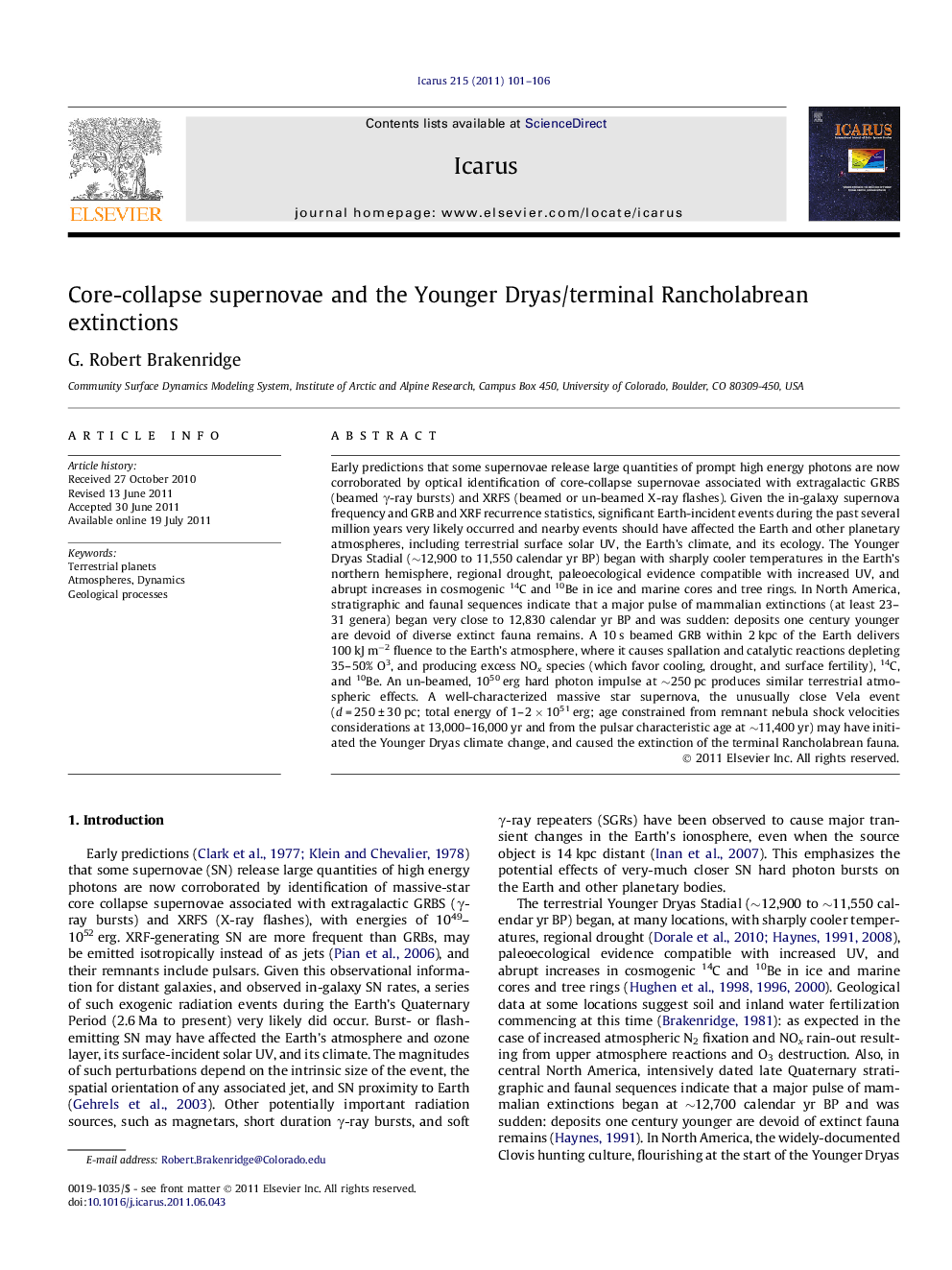| Article ID | Journal | Published Year | Pages | File Type |
|---|---|---|---|---|
| 1773971 | Icarus | 2011 | 6 Pages |
Early predictions that some supernovae release large quantities of prompt high energy photons are now corroborated by optical identification of core-collapse supernovae associated with extragalactic GRBS (beamed γ-ray bursts) and XRFS (beamed or un-beamed X-ray flashes). Given the in-galaxy supernova frequency and GRB and XRF recurrence statistics, significant Earth-incident events during the past several million years very likely occurred and nearby events should have affected the Earth and other planetary atmospheres, including terrestrial surface solar UV, the Earth’s climate, and its ecology. The Younger Dryas Stadial (∼12,900 to 11,550 calendar yr BP) began with sharply cooler temperatures in the Earth’s northern hemisphere, regional drought, paleoecological evidence compatible with increased UV, and abrupt increases in cosmogenic 14C and 10Be in ice and marine cores and tree rings. In North America, stratigraphic and faunal sequences indicate that a major pulse of mammalian extinctions (at least 23–31 genera) began very close to 12,830 calendar yr BP and was sudden: deposits one century younger are devoid of diverse extinct fauna remains. A 10 s beamed GRB within 2 kpc of the Earth delivers 100 kJ m−2 fluence to the Earth’s atmosphere, where it causes spallation and catalytic reactions depleting 35–50% O3, and producing excess NOx species (which favor cooling, drought, and surface fertility), 14C, and 10Be. An un-beamed, 1050 erg hard photon impulse at ∼250 pc produces similar terrestrial atmospheric effects. A well-characterized massive star supernova, the unusually close Vela event (d = 250 ± 30 pc; total energy of 1–2 × 1051 erg; age constrained from remnant nebula shock velocities considerations at 13,000–16,000 yr and from the pulsar characteristic age at ∼11,400 yr) may have initiated the Younger Dryas climate change, and caused the extinction of the terminal Rancholabrean fauna.
► Massive star supernova (SN) hard photon bursts can affect planetary environments. ► The Vela supernova was energetic and exceptionally close to the Solar System. ► Two independent age estimates (11,400; 13,000–16,000 yr BP) apply to Vela. ► Increases in terrestrial cosmogenic C14 and Be10 occurred at 12,900 yr BP. ► Younger Dryas cooling and mammalian extinctions are compatible with Vela causation.
